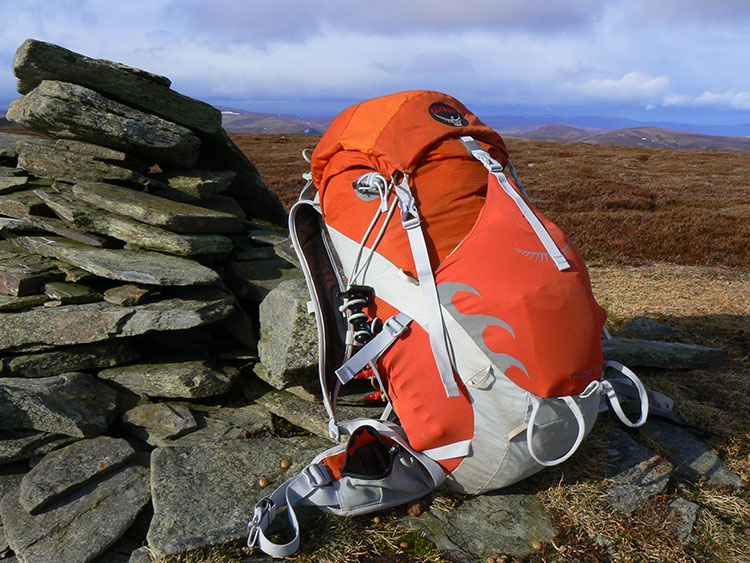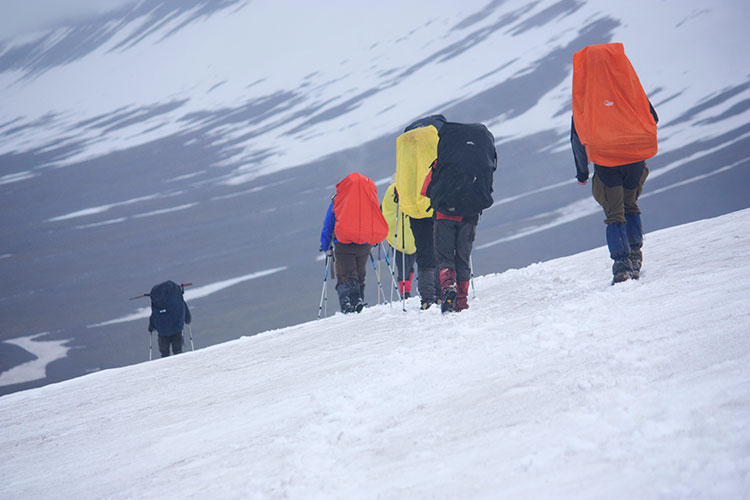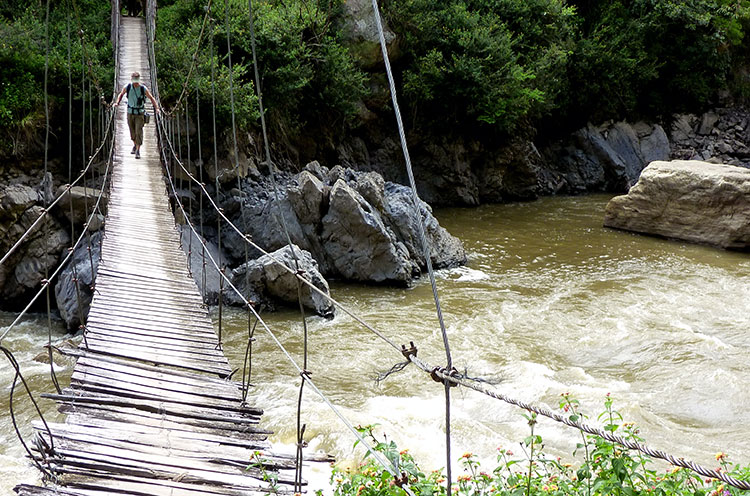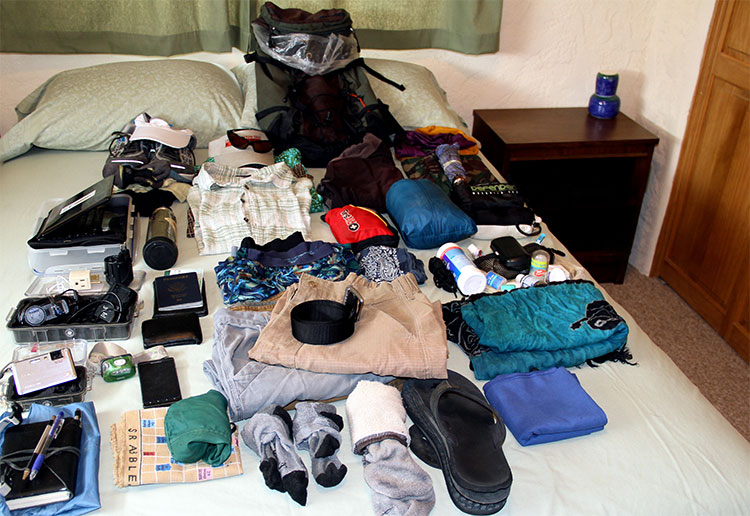
Of course, packing involves deeply personal decisions. Everyone has their own ideas of comfort and style. But by following a few simple field-tested tenets of travelling small, you can shed size and weight. It might not always save your trip, but it will save your spine and your sanity.
Start with a bag that fits in a plane's overhead compartment with minimal shoving. Fill it with as much as you can with moderate shoving. Leave behind the rest. Tough decisions on your living-room floor will pay big dividends on the road.
Black holes are so compact that light can not escape their gravity. Your bag should function on a similar principle. Folded is smaller than wadded. Folded and rolled: smaller still. If your clothes take up more than one-third of your bag, you are probably taking too much.
It turns out, most cultures have figured out how to wash stuff. Whether it be via hotel laundry, a local cleaners, or the old lady around the corner ready to make a few pesos, a clean shirt is usually just a few hours away. At a pinch, most lodgings have a sink and running water.

Three pairs of socks. Three pairs of underwear. Three shirts. Wear one, wash one, dry one. You can get more miles out of leg wear, so two pairs of pants and one culturally appropriate pair of shorts or a skirt should suffice. Choose light, flowing, quick-dry cotton-poly blends in matching colours that handle wrinkles well.
Most modern electronics (like phones and cameras) switch voltage automatically when you plug them in. (Double-check the plug where it says ‘Input: 100~240v’.) Leave voltage-specific devices and the heavy converter at home. A three-way splitter plugged into a multi-country adapter should be enough to keep all your devices juiced.
Repeat this to yourself constantly as you pack. The unknown of travelling makes us want to surround ourselves with familiar items but the ‘what if’ game will get you in trouble. On the off-chance you find you do need it, likely you can buy or borrow it. But do bring a quick-drying pack towel, a rare example where synthetic technology outperforms the classics.

This is best illustrated with some examples.
The frisbee: in addition to its international friend-making potential (walk into any public space and start tossing one around, you'll see), strategically packing it on the outside edge of your pack provides hard-shell protection for breakables. Additional uses: cutting board, plate, bowl, bottle opener, fan, dry place to sit.
A sarong: it's a changing room, it's a blanket, it's a privacy wall, it's a towel, it's a bag, it's a sunshade, it's quite possibly the most versatile piece of cloth in your bag. Oh, it's also a skirt.
A parachute cord: use it to strap things to the outside of your pack, string up a clothes line in your room, tie your bag to the roof of your bus, or tie the roof back on to your bus.
Once you've got your pack list dialed down to the essentials, you might find there are one or two items that just won't fit. If necessary, exploit the the airline industry's three biggest luggage loopholes:
1. Wearing is not carrying. Stuff your pockets. Don your jacket. Wear your hiking boots and pack your sandals.
2. ‘Carry on plus one personal item’ should be music to your ears. Consider a small shoulder bag, a camera bag, or smaller backpack for those items you are taking as gifts, and those you will be bringing home as souvenirs.
3. Duty-free doesn't count. If you can't fit it in your bag, many airlines let you carry it on without penalty.

This is a list of everything the author takes on a multi-month trip to Southeast Asia. Other destinations may require slight modification.